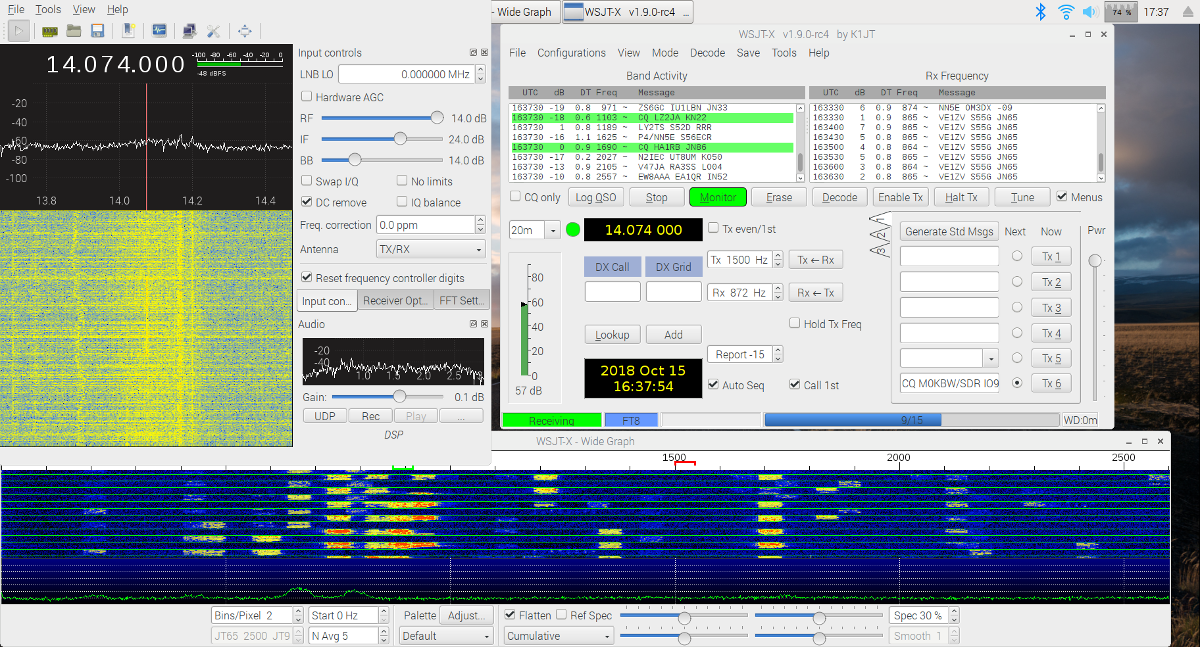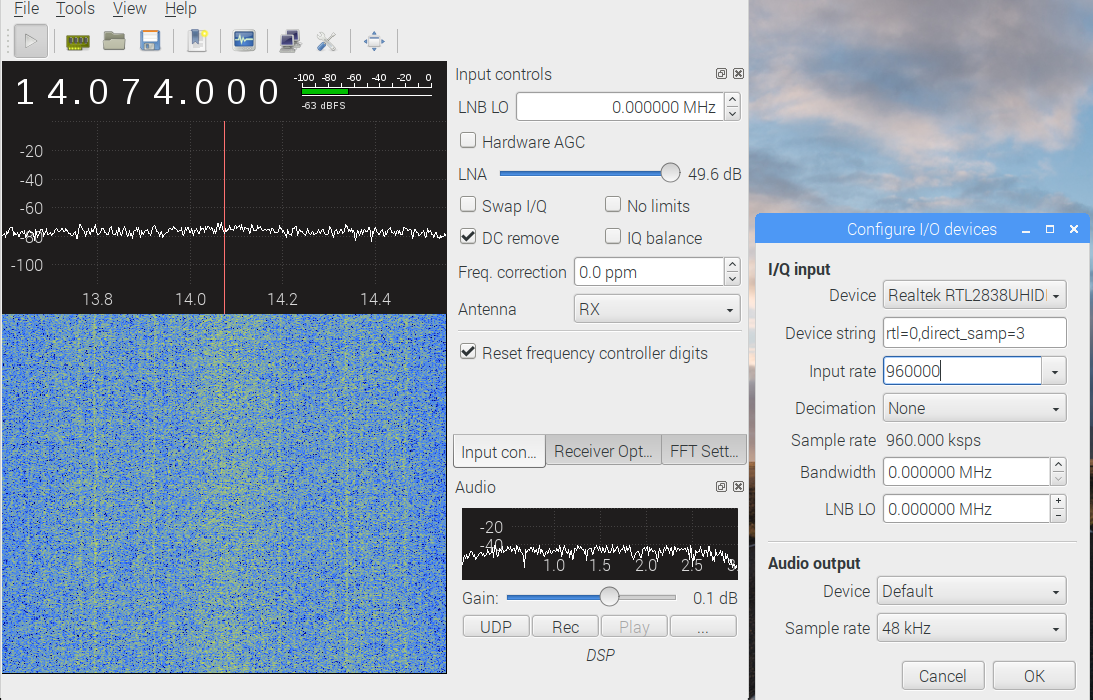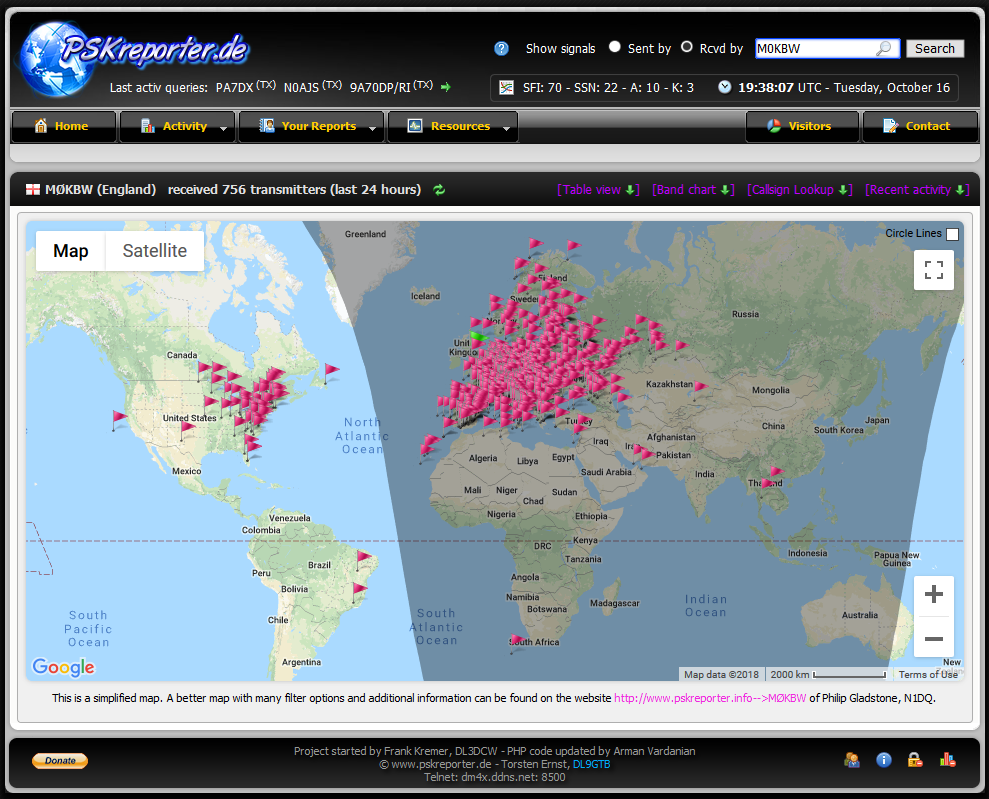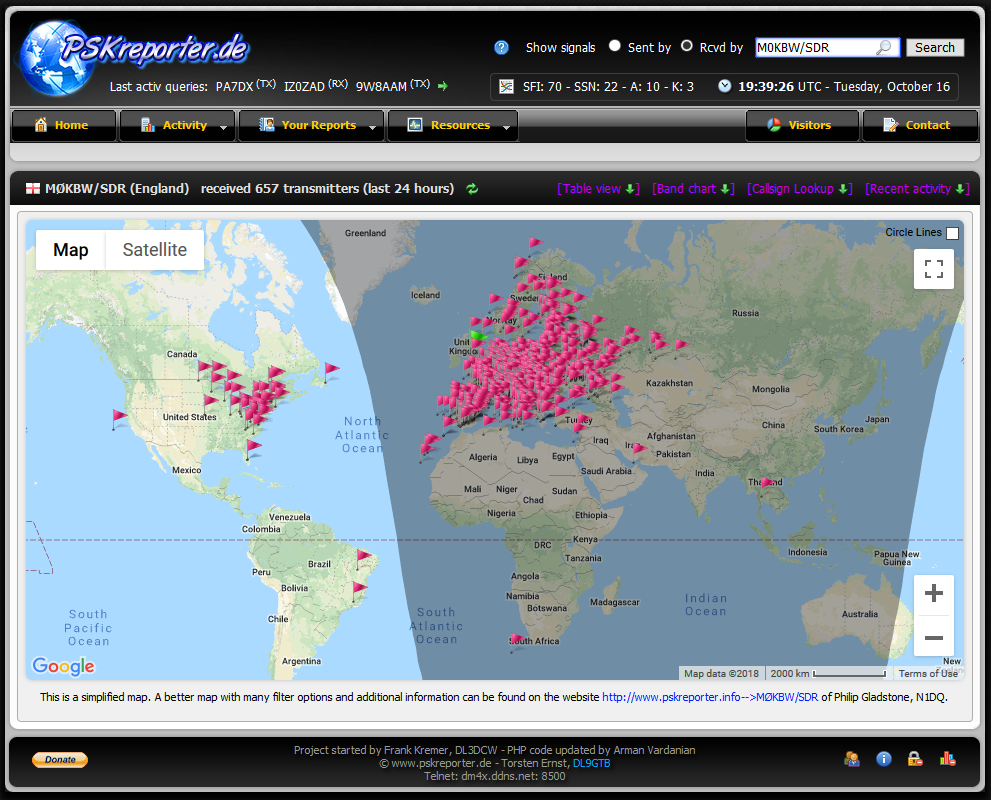FT8 Monitoring Station with SDR and Raspberry Pi 3B
FT8 is a digital mode, invented by Joe Taylor K1JT, that has become very popular these days. A lot of people talked about it in both possitive and negative ways, so I decided to make my own opinion. When I was playing with WSJT-X software, I found that there is a possibility to upload the decoded stations to a server where all the contacts are shown in a map. I found this exciting, so I connected my Raspberry Pi to the transceiver (TRX) and watched the propagation for several days. Unfortunately, the power consuption of the TRX is quite high, so I had the idea to try that with my software defined radio (SDR) HackRF. I used GQRX software in combination with WSJT-X and Pulse Audio Volume Control (pavucontrol) for mixing the audio signals (virtual audio cable). I noticed that there was a problem with reception not being reliable. Firstly I thought that it was caused by a weak power supply, so I replaced my DC addapter with a laboratory power supply. After some tests I noticed that the main chip on Raspberry Pi was getting very hot. Therefore, I ordered an active heat sink that keeps Raspberry Pi cold and it made a great difference. Now I can run the monitoring station 24/7 without any problems. Furthermore, I tried to compare the reception of my TS-590SG with HackRF SDR. TS-590SG has a power divider already built in, so I could use it for splitting the signals comming from my indoor antenna. To be fair, by connecting the SDR to the TRX, the noise level of the TRX increased a bit. On the other hand, I could not hear this effect when the antenna was connected as the noise floor was much higher. The results are shown below the text. It can be seen that they do not differ that much. My HF transceiver received 756 transmitters, 1691 reports and 57 countries in 24 hours in comparison to the SDR where 657 transmitters, 1370 reports and 54 countries were decoded. It seems that SDR in combination with Raspberry Pi works well. As I want to keep HackRF for other tests, I decided to buy a cheeper RTL-SDR for this automatic monitoring station. (Please see the results below.)


SDR + Raspberry Pi 3B with a heat sink

GQRX + WSJT-X running on Rasberry Pi 3B
Map, reception at 14.074 MHz, TS-590SG
Map, reception at 14.074 MHz, HackRF
My new RTL-SDR (version no. 3) has been delivered. GQRX software does not allow to receive signals below 24 MHz in combination with RTL-SDR until a direct sampling mode is activated. I found a message of Thomas KC3JVH (link) that this can be done by writing direct_samp=3 into the device string in the config window (see the screenshot below), so no up-converter is required for HF reception with this particular dongle. I compared RTL-SDR in the same way as HackRF with the reference transceiver TS-590SG. TS-590SG received 771 transmitters, 1742 reports and 56 countries in 24 hours in comparison to RTL-SDR where 728 transmitters, 1611 reports and 56 countries were decoded. I am very happy with that.


Links:
https://pskreporter.info/pskmap?callsign=M0KBW
https://www.pskreporter.de/?s_type=rcvdby&call=M0KBW&search=Search

